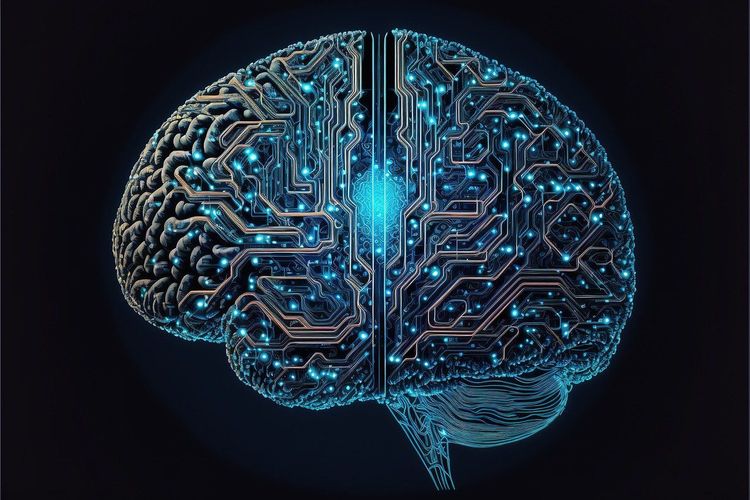**Peter Weckesser on AI at Schneider Electric: Insights on Digital Transformation and Generative AI**
In a recent podcast episode, Peter Weckesser, Chief Digital Officer at Schneider Electric, shares valuable insights into the company's innovative hub-and-spoke AI configuration and discusses how Schneider Electric is capitalizing on generative AI to enhance productivity and drive business success. Below is an edited transcript highlighting the key parts of the conversation.
**Peter’s Role at Schneider Electric**
As Chief Digital Officer, Peter oversees several critical areas at Schneider Electric, a global leader in energy management, industrial automation, and industrial software. His responsibilities include managing the internal IT infrastructure, which aims to drive higher productivity than competitors across various business processes. Peter collaborates closely with business process owners to identify opportunities for improvement and deploy top-tier tools for enhancement.
Schneider Electric's product portfolio consists of three layers:
1. **Connected Products**: These serve as the frontline products deployed in industrial applications, infrastructure, and buildings.
2. **Edge Solutions**: This layer involves edge computing and control products that gather and process data from connected devices.
3. **Cloud and Digital Services**: This aggregates data for analysis, providing insights through software applications.
To facilitate seamless data flow among these layers, Peter's organization is responsible for creating an integrated technology backbone.
**The Role of AI in Digital Transformation**
AI is transforming Schneider Electric’s operations rapidly. The company embarked on its AI journey two and a half years ago, forming a dedicated AI organization led by a chief AI officer. This initiative aimed to consolidate over 30 fragmented AI initiatives into a cohesive strategy driven by business use cases rather than technology alone.
The hub-and-spoke model developed by Schneider includes a centralized AI hub that provides technological expertise, data platforms, and support, while spokes represent various functions or business units responsible for specific use cases. This structure enables greater collaboration and allows for a targeted approach to problem-solving.
**Measuring AI Impact**
Schneider Electric assesses the impact of AI through three dimensions:
1. **Internal Productivity**: AI is harnessed across functions such as finance, supply chain, and sales to enhance operational efficiency and productivity.
2. **Product Functionality**: AI is integrated into products, offering advanced features such as AI-driven algorithms that optimize heating systems in buildings.
3. **Consulting Services**: Schneider provides AI-based solutions that improve customer processes, thereby increasing demand for these services.
With significant investments in AI, Schneider Electric expects a return ratio of 1:3, meaning for every dollar invested, a potential productivity gain of three dollars exists.
**Generative AI: A Game Changer**
Generative AI is poised to be a transformative force across industries. Schneider Electric recognizes the need to harness this technology judiciously. Peter identifies software research and development, along with sales and marketing, as key areas where generative AI can significantly enhance productivity.
For software engineering, tools like GitHub Copilot have demonstrated productivity boosts of 15-20%. The company's aim is to leverage these tools to accelerate product time-to-market without reducing workforce numbers. In customer service, generative AI is set to replace traditional chatbots, enabling more responsive and accurate customer interactions.
Moreover, generative AI enhances marketing efforts by improving online product descriptions and customer engagement, streamlining the process of delivering accurate and timely information.
**AI Governance and Ethical Considerations**
As Schneider Electric integrates AI into its operations, the importance of robust governance emerges. The company has established a separate governance organization to oversee AI, ensuring that ethical standards are maintained and potential risks, such as hallucinations and cybersecurity concerns, are addressed conscientiously.
**Sustainability as a Core Value**
Sustainability is integral to Schneider Electric's mission. The company's sustainability initiatives address energy consumption reduction and carbon emissions management, enhanced by AI-driven technologies. Schneider Electric offers consulting to help clients identify sustainability opportunities and leverage its extensive product portfolio to achieve their goals.
**Advice for Other Executives**
For leaders in other organizations approaching AI and generative AI, Peter emphasizes the importance of viewing AI as a business opportunity rather than just a technological trend. Executives should consolidate AI initiatives, utilize a business case-driven approach, and standardize on a manageable number of technology platforms to enable effective governance and maximize impact.
In conclusion, Schneider Electric's strategic approach to AI deployment not only promotes innovation and efficiency but also reinforces its commitment to sustainability—setting a benchmark for digital transformation in the industrial sector.







